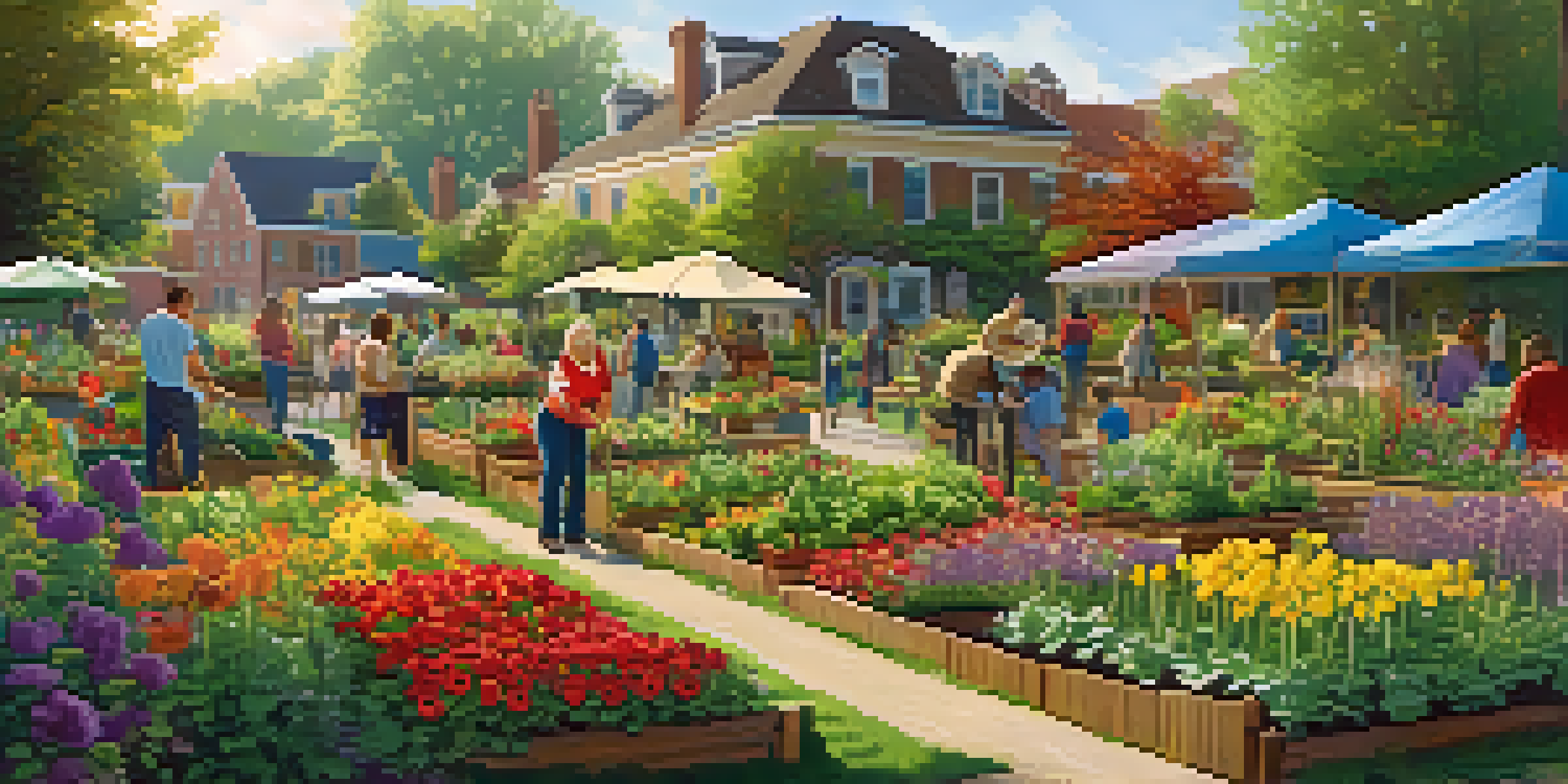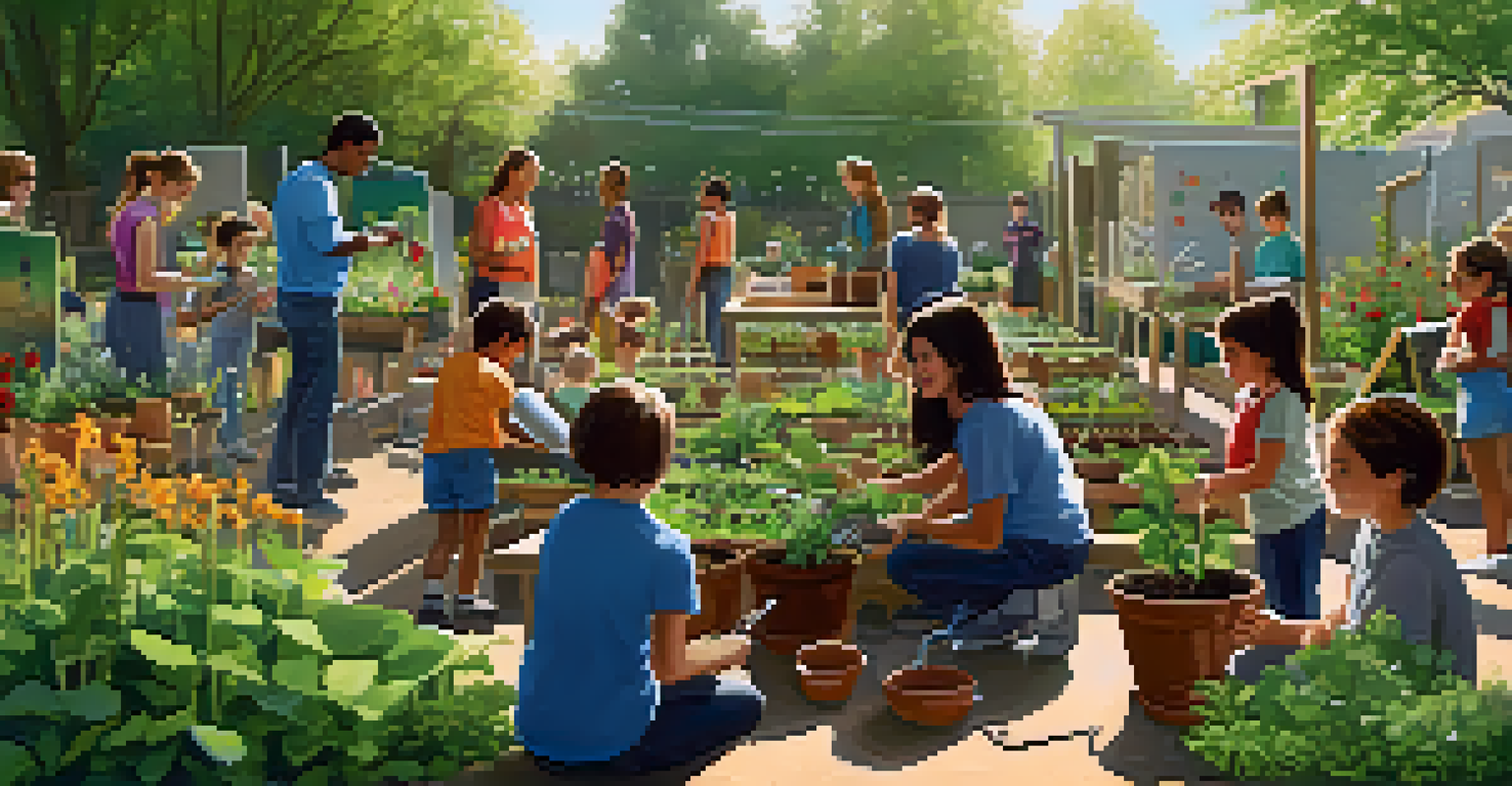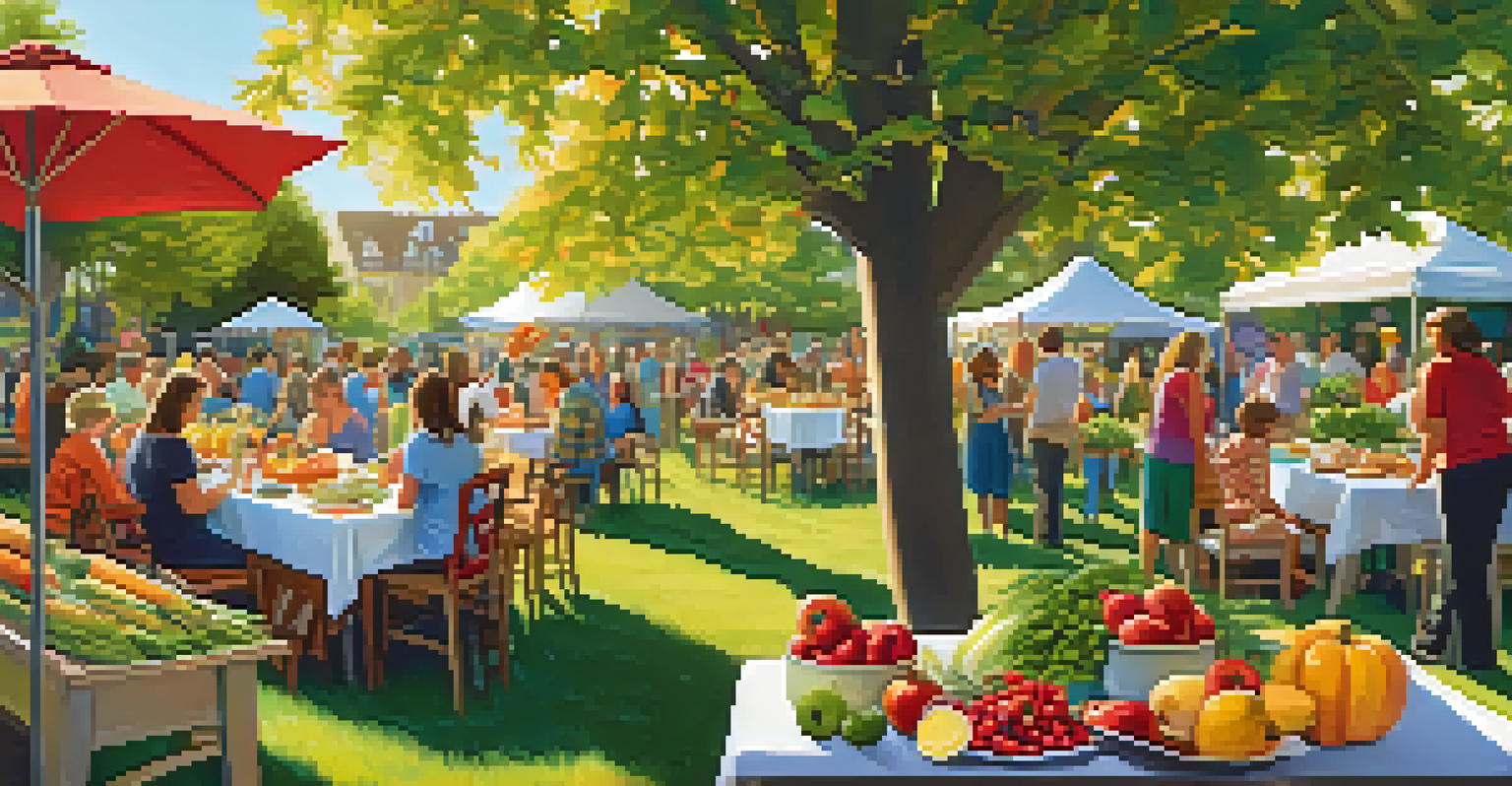Community Gardens: Building Bonds and Green Spaces Together

What Are Community Gardens and Their Purpose?
Community gardens are shared spaces where individuals come together to grow plants, vegetables, and flowers. These gardens not only beautify neighborhoods but also provide fresh produce to local residents. They serve as a platform for community engagement, education, and environmental stewardship, making them essential in urban settings.
Community gardening is a great way to connect with your neighbors and to grow your own food. It’s about more than just growing plants; it’s about growing community.
Imagine a vacant lot transformed into a lush oasis, where neighbors gather to plant seeds and share gardening tips. This transformation fosters a sense of belonging and encourages teamwork among participants. Through these shared efforts, community gardens become more than just patches of green—they evolve into vibrant social hubs.
The purpose of community gardens extends beyond just gardening; they aim to cultivate social connections and promote sustainability. By working together, community members can address food deserts, encourage biodiversity, and create a sense of pride in their local environment. Essentially, these gardens are a collective effort to nurture both the land and the community.
The Social Benefits of Community Gardening
Engaging in community gardening provides numerous social benefits that strengthen neighborhood ties. As people work alongside one another, they form friendships and develop a support network. This collaborative spirit fosters a sense of belonging, which can be particularly valuable in urban areas where isolation is common.

Community gardens also serve as a melting pot for diverse cultures and backgrounds. Participants often share different gardening techniques, recipes, and traditions, enriching everyone involved. This exchange of ideas cultivates respect and understanding, making the garden a microcosm of the larger community.
Community Gardens Foster Connection
These shared spaces not only beautify neighborhoods but also strengthen social ties among diverse participants.
Moreover, community gardens can host events that further enhance social interaction, such as potlucks or workshops. These gatherings provide an opportunity for residents to showcase their culinary skills and learn from one another. In this way, gardens become not just places to grow food, but also spaces for building lasting relationships.
Environmental Impact of Community Gardens
Community gardens play a crucial role in improving urban environments by promoting biodiversity. By creating green spaces amidst concrete jungles, they provide habitats for various species, from bees to birds. This increase in biodiversity contributes to healthier ecosystems and can even improve air quality.
The greatest gift of the garden is the restoration of the five senses.
Additionally, these gardens help mitigate the urban heat island effect, which occurs when cities become significantly warmer than surrounding areas. The plants in community gardens absorb sunlight and provide shade, helping to cool the environment. This cooling effect is not just beneficial for the plants but also for the residents who enjoy spending time outdoors.
Furthermore, community gardens encourage sustainable practices, such as composting and organic gardening. By reducing reliance on store-bought produce, they promote a more sustainable food system. Participants learn to appreciate the importance of environmental stewardship, fostering a collective responsibility towards the planet.
Educational Opportunities in Community Gardens
Community gardens serve as excellent educational platforms, particularly for children and newcomers to gardening. Many gardens offer workshops and hands-on experiences that teach about plant biology, nutrition, and sustainability practices. Through these activities, participants gain valuable knowledge that they can apply in their own lives.
For example, children can learn where their food comes from while developing essential life skills like teamwork and patience. They may discover the joy of planting seeds and watching them grow, which fosters a deeper appreciation for nature. These lessons can be impactful, inspiring future generations to engage with the environment responsibly.
Environmental Benefits of Gardens
Community gardens enhance urban biodiversity, improve air quality, and help mitigate the heat island effect.
Moreover, community gardens often collaborate with local schools and organizations to expand their educational reach. By creating partnerships, they can host field trips or educational programs that emphasize the importance of gardening and healthy eating. This not only benefits participants but also strengthens the ties between the garden and the broader community.
How to Start a Community Garden
Starting a community garden may seem daunting, but it can be a rewarding experience with the right approach. First, gather interested individuals in your neighborhood to brainstorm ideas and establish common goals. This initial meeting sets the foundation for collaboration and ensures everyone’s voice is heard.
Next, choose a suitable location that is accessible and has adequate sunlight and water supply. It's essential to secure permission from property owners or local authorities if the land is not already available for gardening. Once you have a spot, develop a plan that outlines the types of plants you'll grow, the layout of the garden, and how responsibilities will be shared.
Finally, organize a kick-off event to engage the community and start the gardening process. This could be a planting day, where everyone contributes their time and effort. By fostering a sense of ownership and pride right from the beginning, you’ll set the stage for a successful community garden that brings people together.
Challenges of Maintaining Community Gardens
While community gardens offer many benefits, they also come with their share of challenges. One common issue is managing the diverse expectations and gardening styles of participants. With so many individuals involved, it can be difficult to reach a consensus on how the garden should be maintained and utilized.
Additionally, securing ongoing funding and resources can pose significant hurdles. Many community gardens rely on donations or grants, which can fluctuate over time. To combat this, it's essential to create a sustainable plan that includes fundraising activities and community support to ensure the garden thrives in the long run.
Educational Opportunities Abound
Community gardens provide hands-on learning experiences that teach gardening skills and promote healthy eating.
Lastly, addressing issues such as vandalism or neglect is crucial for maintaining the garden's integrity. Establishing a sense of ownership among participants can help mitigate these problems, but it's also important to foster open communication and a collaborative atmosphere to address concerns as they arise.
Celebrating Success in Community Gardens
Once a community garden is established, celebrating its successes is vital for maintaining enthusiasm and motivation. Organizing seasonal harvest festivals or open houses allows participants to showcase their hard work and enjoy the fruits of their labor together. These events not only strengthen community bonds but also attract new members who may be interested in joining.
Additionally, sharing stories and experiences through social media or community newsletters can highlight the garden's impact. By documenting progress and celebrating milestones, participants can reflect on their achievements and inspire others. This visibility can also garner support from local organizations or businesses looking to contribute to community initiatives.

Ultimately, celebrating success in community gardens reinforces the idea that everyone’s efforts are meaningful. Recognizing the collective accomplishments fosters a sense of pride and encourages continued participation. Together, community members can look forward to future growth, both in the garden and their relationships.